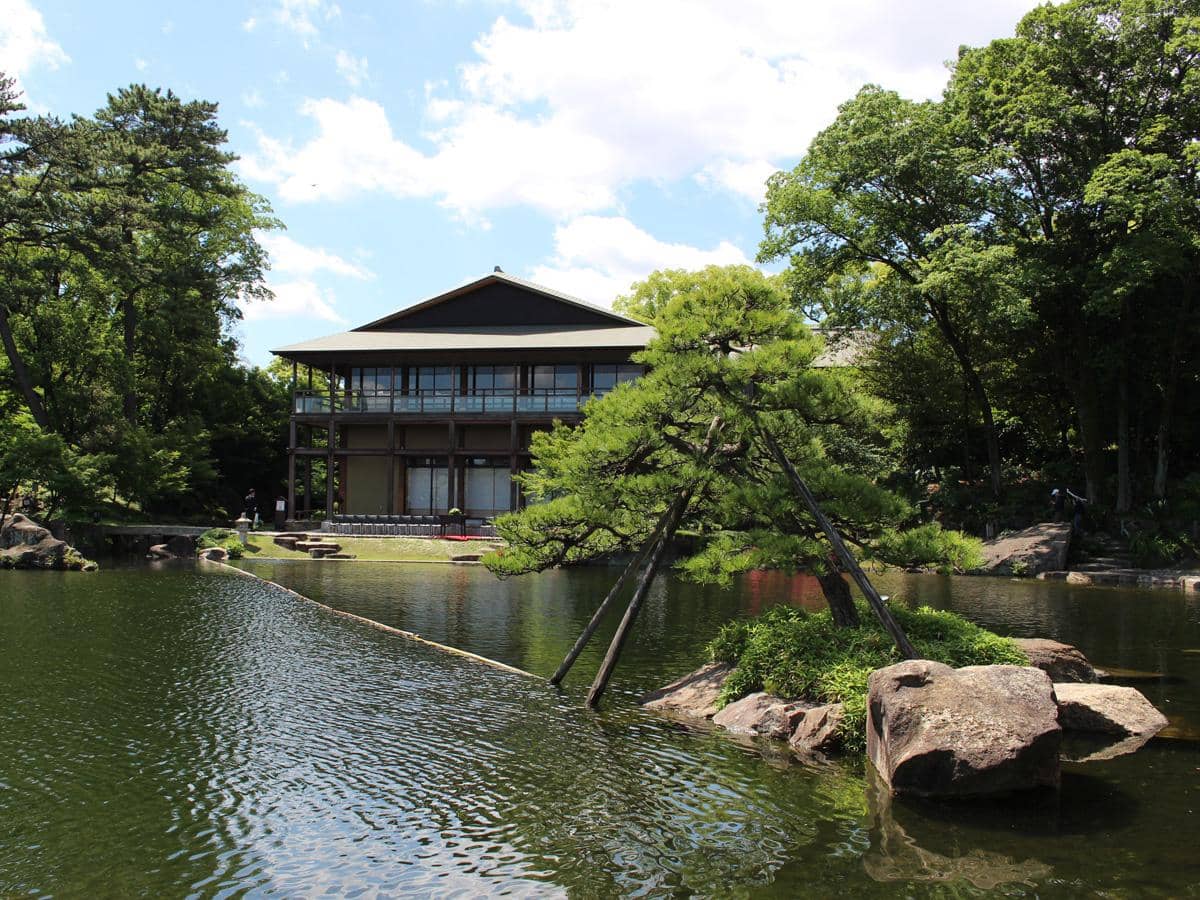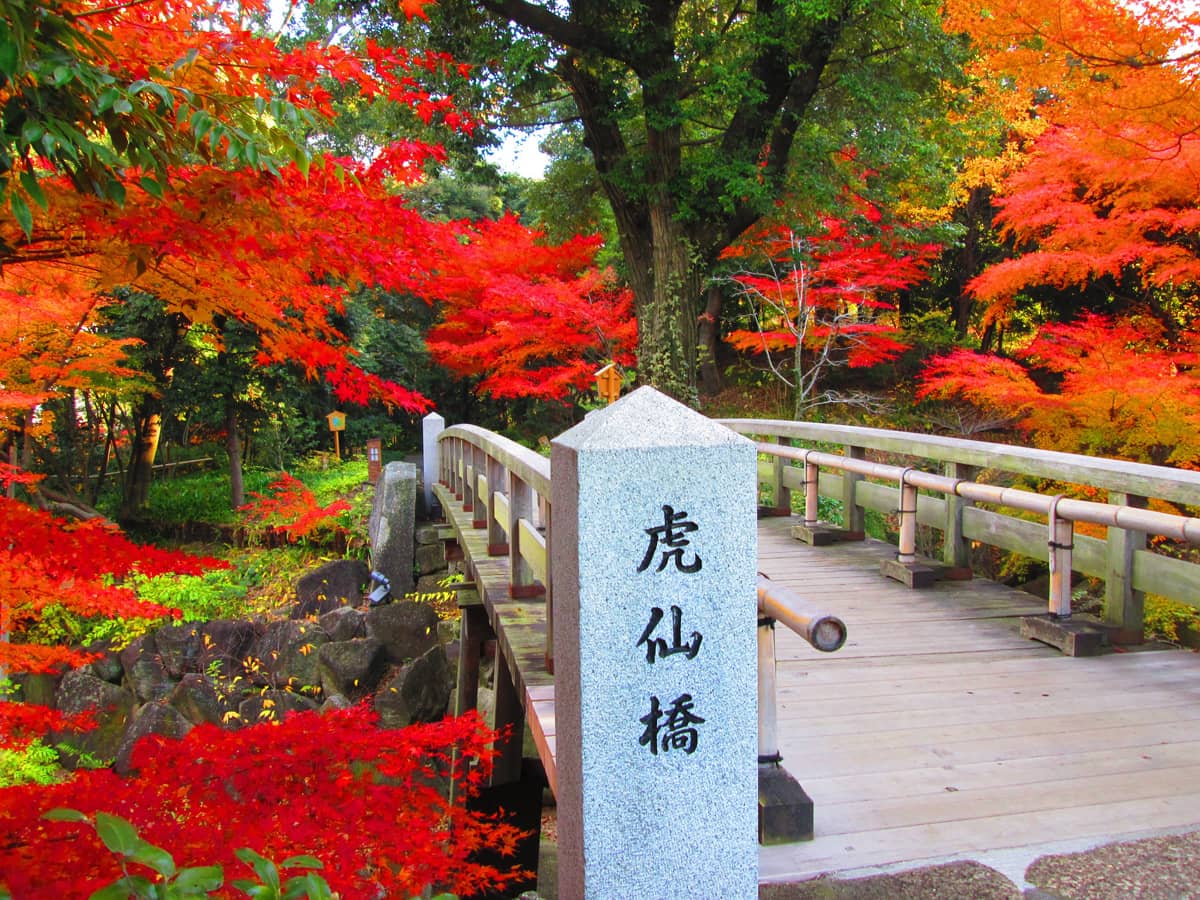Tokugawaen Garden
A meticulously designed Japanese garden in Nagoya, featuring a central pond, picturesque paths, and serene tea houses, offering a tranquil escape.

Highlights
Must-see attractions

Social
From TikTok & Reddit
Best Time
Cherry blossoms in bloom
Tokugawaen Garden
Best Time
Cherry blossoms in bloom

Highlights
Must-see attractions
A meticulously designed Japanese garden in Nagoya, featuring a central pond, picturesque paths, and serene tea houses, offering a tranquil escape.
"A serene oasis of Japanese beauty, perfect for a peaceful stroll and appreciating nature's artistry."
🚶♀️ Stroll the Paths
Wander along the winding paths that encircle the pond, offering diverse scenic views.
🍵 Tea Time Delight
Don't miss the chance to relax at a traditional Japanese tea house within the garden.
Highlights
Discover the most iconic attractions and experiences

Central Pond
Main garden area
A serene pond symbolizing the ocean, fed by a stream and waterfall, creating a picturesque landscape.
Tea Houses
Various locations within the garden
Enjoy a moment of tranquility and traditional Japanese tea in charming, hidden tea houses.

Seasonal Foliage
Throughout the garden
Experience the vibrant colors of cherry blossoms in spring and fiery maple leaves in autumn.
Plans like a pro.
Thinks like you
Planning Your Visit
Timing is Everything
Combine with Culture
Best Times
Insider Tips
from TikTok, Instagram & Reddit
🚶♀️ Stroll the Paths
Wander along the winding paths that encircle the pond, offering diverse scenic views.
🍵 Tea Time Delight
Don't miss the chance to relax at a traditional Japanese tea house within the garden.
📸 Capture the Beauty
Bring your camera to photograph the stunning landscapes, especially during peak seasons.
🧥 Dress for the Season
Comfortable shoes are a must for exploring. Consider a kimono for a unique photo op!
Tips
from all over the internet
🚶♀️ Stroll the Paths
Wander along the winding paths that encircle the pond, offering diverse scenic views.
🍵 Tea Time Delight
Don't miss the chance to relax at a traditional Japanese tea house within the garden.
📸 Capture the Beauty
Bring your camera to photograph the stunning landscapes, especially during peak seasons.
🧥 Dress for the Season
Comfortable shoes are a must for exploring. Consider a kimono for a unique photo op!
🦉 Wildlife Spotting
Keep an eye out for local wildlife, including the occasional owl!
What Travellers Say
Reviews Summary
Visitors consistently praise Tokugawaen Garden for its serene beauty and meticulous Japanese landscaping, highlighting it as a peaceful escape. The seasonal foliage, particularly in autumn, is a major draw. Some find the garden's size to be on the smaller side, and dining options are limited to a tea house.
What People Like
What People Dislike
Frequently Asked Questions
🚇 🗺️ Getting There
Tokugawaen Garden is easily accessible by public transport. From Nagoya Station, take the Higashi-yama Subway Line to Sakae Station, then transfer to the Meijo Line and alight at Ozone Station. The garden is a short walk from there.
Yes, there is parking available near the garden, though it can fill up quickly during peak seasons. It's often recommended to use public transportation to avoid parking hassles.
Tokugawaen Garden is located in Higashi Ward, Nagoya. While not directly adjacent to major hubs like Nagoya Station, it's a pleasant walk from nearby areas, especially if you're visiting the Tokugawa Art Museum.
If you're arriving in Nagoya by Shinkansen, head to Nagoya Station and follow the subway directions mentioned above. The garden is a well-known destination, so local signage should also guide you.
Currently, there are no specific shuttle services directly to Tokugawaen Garden. Relying on Nagoya's efficient public transportation system is the most common and recommended method.
🎫 🎫 Tickets & Entry
Admission to Tokugawaen Garden is typically a small fee, often around 300 JPY for adults. Prices can vary, so it's always best to check the official website for the most current information.
The garden is generally open from 9:00 AM to 5:00 PM, with last admission usually around 4:30 PM. However, hours can change seasonally, and it's advisable to confirm before your visit.
While they are adjacent, separate tickets are usually required. However, some visitors find it convenient to purchase tickets for both attractions on the same day.
Online ticket purchasing options may be limited for the garden itself. It's generally recommended to purchase tickets upon arrival at the garden's entrance.
Discounts may be available for specific groups such as seniors or children. Check the garden's official website or inquire at the ticket counter for any applicable offers.
📸 📸 Photography
Yes, photography is generally allowed in Tokugawaen Garden, allowing you to capture its beauty. However, always be mindful of other visitors and avoid intrusive photography.
The central pond, the traditional tea houses, and the areas with seasonal foliage (like autumn leaves or cherry blossoms) offer the most photogenic scenes.
Tripod usage might be restricted during peak hours or for professional shoots. It's best to check the garden's specific photography guidelines upon arrival.
Drone photography is almost certainly prohibited in Japanese gardens like Tokugawaen to ensure the peace and safety of visitors and the environment.
Early mornings or late afternoons offer softer light, ideal for photography. Golden hour can create magical shots, especially with the reflections on the pond.
🎫 🌳 Onsite Experience
You can enjoy a peaceful stroll around the central pond, admire the meticulously maintained Japanese landscaping, visit the tea houses, and appreciate the seasonal flora.
A leisurely visit to Tokugawaen Garden can take anywhere from 1 to 2 hours, depending on your pace and how much time you spend at the tea houses or simply enjoying the scenery.
Information on guided tours can be limited. It's best to check the official website or inquire at the information center upon arrival for any available tour options.
The garden features paved paths and walkways, but some areas might have inclines or uneven terrain. It's advisable to check accessibility details beforehand if mobility is a concern.
Spring for cherry blossoms and autumn for vibrant fall foliage are particularly stunning. However, the garden offers beauty year-round.
🍽️ 🍵 Food & Dining
Yes, there is a tea house within the garden where you can enjoy traditional Japanese tea and snacks.
The tea house typically offers Japanese sweets (wagashi) and various types of Japanese tea, providing a serene culinary experience.
The area around Tokugawaen Garden, particularly near Ozone Station and Sakae, offers a wide range of dining options, from casual eateries to more formal restaurants.
Picnicking might be restricted in certain areas. It's best to consume any outside food and drinks before entering or in designated areas, if available.
While the tea house offers a garden view, dedicated restaurants with panoramic garden views might be limited. The adjacent Tokugawa Art Museum might have a cafe.
For Different Travelers
Tailored advice for your travel style
👨👩👧 Families with Kids
Consider bringing snacks and drinks to enjoy in designated areas, as dining options within the garden are limited to a tea house. The adjacent Tokugawa Art Museum might have exhibits that could engage older children interested in history and samurai culture. Remember to emphasize quiet observation and respect for the garden's tranquility.
📸 Photographers & Instagrammers
Focus on capturing the reflections in the pond, the intricate details of the tea houses, and the vibrant colors during spring and autumn. Early mornings and late afternoons offer the best lighting conditions. Be mindful of other visitors and any photography restrictions, especially regarding tripods or professional equipment.
🧘♀️ Solo Travelers Seeking Peace
Take your time to wander the paths, find a quiet bench to sit and reflect, or enjoy a cup of tea at one of the garden's tea houses. It's a place to disconnect from the hustle and bustle and reconnect with nature and yourself.
Deep Dives
In-depth insights and expert knowledge
The Art of Japanese Garden Design
The garden's layout encourages a journey of discovery, with each turn revealing a new vista. The use of rocks, water, carefully pruned trees, and strategically placed islands creates a harmonious and tranquil atmosphere. This meticulous attention to detail is a hallmark of traditional Japanese garden artistry, designed to evoke a sense of peace and contemplation.
Visitors often remark on the garden's ability to transport them away from the urban bustle. The sound of flowing water, the rustling leaves, and the serene reflections on the pond contribute to an immersive experience that soothes the senses and offers a welcome escape.
Seasonal Spectacles: When to Visit
Autumn is another highlight, with the garden transforming into a fiery spectacle of red, orange, and yellow maple leaves. The vibrant foliage against the backdrop of the traditional structures and water features creates a stunning visual feast. This season also attracts many visitors eager to witness the autumn colors.
Even in winter, the garden retains its charm with the stark beauty of bare trees and the possibility of frost or snow. Summer offers lush greenery, and the sound of water features can be particularly refreshing. For a more tranquil experience, consider visiting on a weekday morning, regardless of the season.
Beyond the Garden: The Tokugawa Art Museum
The museum's collection includes exquisite samurai armor, swords, calligraphy, ceramics, and importantly, the National Treasure 'The Tale of Genji Emaki'. This ancient scroll painting is a significant cultural heritage piece, offering a glimpse into Heian period Japan.
Visiting both the garden and the museum provides a comprehensive understanding of the Tokugawa legacy and the aesthetic sensibilities of the era. The proximity makes it easy to dedicate a significant portion of your day to exploring both, offering a rich blend of natural beauty and historical artistry.

Social
from TikTok, Instagram & Reddit